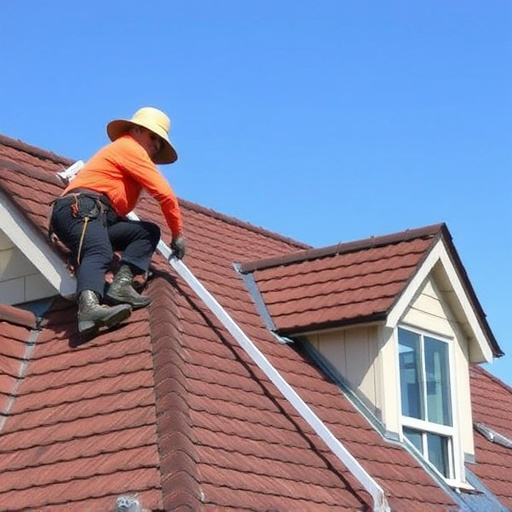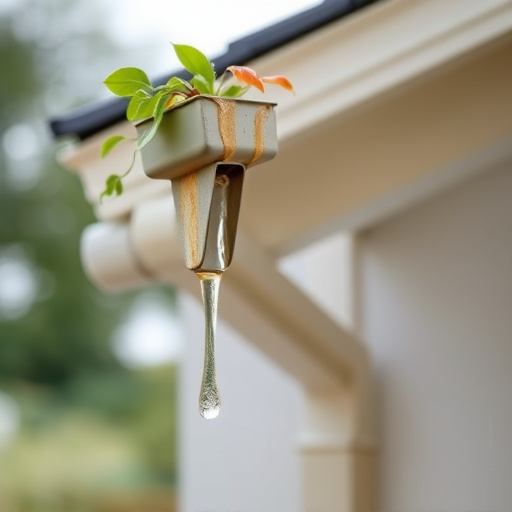DIY or Professional: Navigating Siding Repair Needs
Before repairing siding, assess damage ranging from minor cracks and peeling paint to extensive rot…….
Siding repair, a specialized construction and maintenance practice, involves the restoration and replacement of exterior cladding on buildings. This essential process plays a critical role in preserving structural integrity, enhancing aesthetic appeal, and ensuring energy efficiency. As the built environment ages, siding repair becomes increasingly vital, offering both practical solutions and opportunities for innovation. In this article, we embark on an in-depth exploration of siding repair, its various facets, and its profound impact on the construction industry globally.
Definition: Siding repair is the process of repairing or replacing exterior siding materials on residential or commercial buildings. Siding, a protective covering for walls, serves multiple purposes, including weatherproofing, insulation, and aesthetic enhancement. Common siding materials include wood, vinyl, fiber cement, aluminum, and stone.
Core Components:
Historical Context:
Siding repair has evolved significantly over the centuries, reflecting changes in construction techniques and materials. Traditional wood siding was prevalent in early American architecture, offering warmth and character. However, advancements in vinyl and fiber cement siding in the mid-20th century introduced more durable and low-maintenance options. Today, with a growing focus on sustainability, cedar and recycled material sidings are gaining popularity.
International Influence: Siding repair transcends geographical boundaries, impacting various climates and architectural styles worldwide. The methods and materials used vary significantly across regions, influenced by local weather patterns, cultural preferences, and economic factors.
| Region | Typical Materials | Climate Considerations | Regional Trends |
|---|---|---|---|
| North America | Vinyl, Fiber Cement, Wood | Extreme winters and varying summers require durable materials that withstand temperature fluctuations | Increasing adoption of energy-efficient siding options |
| Europe | Brick, Stone, Wooden Shingles | Diverse climates from coastal to continental demand versatile solutions | Growing popularity of eco-friendly and natural materials |
| Asia Pacific | Vinyl, Aluminum, Fiber Cement | Humid tropical regions necessitate water-resistant siding; colder areas require insulation | Rapid urbanization drives the need for quick, affordable repair solutions |
| Middle East & Africa | Stone, Metal, Precast Panels | Arid climates demand reflective and cooling materials | Rising interest in sustainable construction practices |
Trends Shaping the Industry:
Market Dynamics: The global siding repair market is experiencing steady growth, fueled by rising construction activity, especially in developing economies. According to a recent report, the market size was valued at USD 42.5 billion in 2021 and is projected to reach USD 57.3 billion by 2028, growing at a CAGR of 4.2%.
Investment Patterns: Private equity and venture capital firms are increasingly investing in siding repair companies, recognizing their potential for consistent revenue streams and long-term value creation. This trend has led to mergers, acquisitions, and the development of specialized service networks.
Economic Impact:
Innovations in Siding Repair:
Impact and Future Potential:
Key Policies and Regulations:
Influence on Development:
Main Challenges:
Proposed Solutions:
Case Study 1: Green Retrofit in Urban Chicago
A historic apartment building in downtown Chicago underwent a comprehensive siding repair and retrofit project focusing on sustainability. The old vinyl siding was removed, and recycled fiber cement boards were installed. This case study highlighted the benefits of:
Case Study 2: Disaster Relief in Hurricane-Prone Coastal Areas
After a series of devastating hurricanes, a coastal community initiated a siding repair program targeting vulnerable homes. The initiative involved:
Growth Areas:
Emerging Trends:
Strategic Considerations:
Siding repair is a dynamic and multifaceted field, evolving with technological advancements and shifting global trends. From historical wooden clapboards to modern smart sidings, this practice has played and continues to play a pivotal role in shaping our built environment. As we look ahead, the industry stands at the crossroads of innovation, sustainability, and efficiency.
By embracing new technologies, adapting to changing climates, and prioritizing community development, siding repair professionals can drive positive change. The future promises exciting prospects, from customized 3D-printed sidings to integrated renewable energy solutions. As we navigate these developments, it is essential to recognize the critical role of siding repair in ensuring safe, aesthetically pleasing, and energy-efficient buildings worldwide.
Q: How often should I get my siding repaired?
A: The frequency depends on various factors, including climate, building age, and maintenance history. As a general rule, inspect your siding annually and consider professional repairs or replacements every 10-20 years.
Q: Are there tax benefits for siding repair?
A: Yes, in many countries, certain energy-efficient home improvements, including siding upgrades, qualify for tax credits or deductions. Check local regulations for specific eligibility criteria.
Q: Can I do siding repair myself?
A: While some basic repairs may be DIY-friendly, most extensive or specialized siding work is best left to professionals. Siding installation requires specific skills, tools, and knowledge of building codes.
Q: How can I choose the right siding material for my home?
A: Consider factors like climate, architectural style, budget, and maintenance preferences. Consult with professionals who can provide expert advice based on your region’s unique conditions.
Q: Is siding repair a seasonal activity?
A: While some repairs may be more convenient during certain seasons due to weather considerations, siding work can effectively take place year-round, depending on the climate and chosen materials.

Before repairing siding, assess damage ranging from minor cracks and peeling paint to extensive rot…….

When repairing siding, understand material options, considering climate, budget, and aesthetics for…….